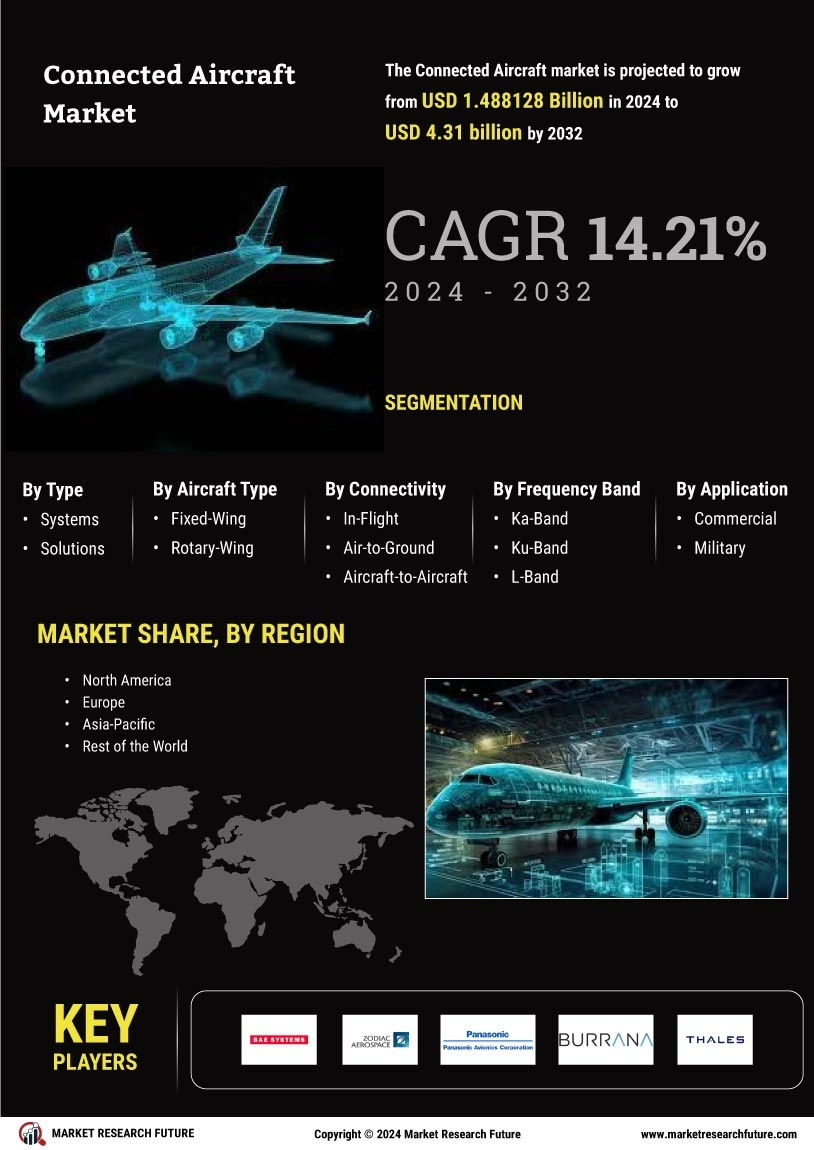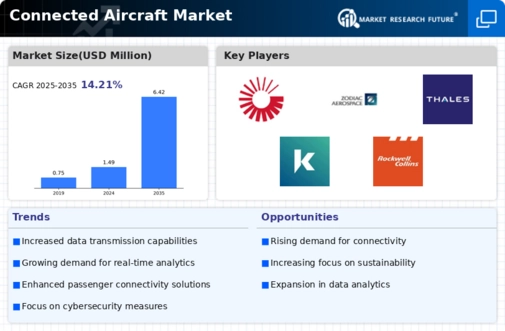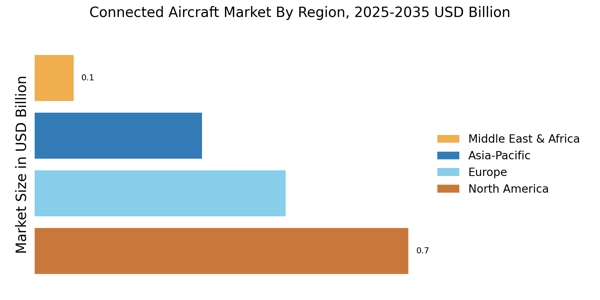Regulatory Support and Standardization
Regulatory bodies are playing a crucial role in shaping the Connected Aircraft Market through the establishment of standards and guidelines. The Federal Aviation Administration (FAA) and the European Union Aviation Safety Agency (EASA) have introduced regulations that promote the integration of advanced connectivity systems in aircraft. These regulations aim to ensure safety and reliability while encouraging innovation. As a result, airlines are more inclined to invest in connected technologies, knowing that they comply with regulatory requirements. This supportive regulatory environment is expected to drive the market forward, with projections indicating a compound annual growth rate of over 10% in the coming years. The alignment of industry standards is likely to foster collaboration among stakeholders, further propelling the Connected Aircraft Market.
Emerging Markets and New Airline Entrants
Emerging markets are presenting new opportunities for the Connected Aircraft Market, as an increasing number of airlines enter the sector. These new entrants are often more agile and willing to adopt innovative technologies to differentiate themselves in a competitive landscape. As these airlines seek to enhance operational efficiency and passenger experience, they are likely to invest in connected aircraft solutions. Additionally, regions with growing air travel demand are expected to see a rise in the adoption of connectivity technologies. This trend is supported by the International Air Transport Association (IATA), which forecasts a significant increase in air passenger numbers in the coming years. Consequently, the Connected Aircraft Market is poised for growth as emerging markets and new airline entrants drive demand for connected solutions.
Technological Advancements in Connectivity
The Connected Aircraft Market is experiencing a surge in technological advancements that enhance connectivity. Innovations such as satellite communications and 5G networks are revolutionizing in-flight connectivity, allowing for seamless data transmission. This is particularly relevant as the demand for high-speed internet access on flights continues to rise. According to recent estimates, the in-flight connectivity market is projected to reach USD 5 billion by 2026, indicating a robust growth trajectory. These advancements not only improve passenger experience but also facilitate real-time data sharing between aircraft and ground operations, thereby enhancing operational efficiency. As airlines increasingly adopt these technologies, the Connected Aircraft Market is likely to witness significant transformations.
Growing Demand for Real-Time Data Analytics
The demand for real-time data analytics is becoming increasingly pronounced within the Connected Aircraft Market. Airlines are recognizing the value of data-driven decision-making, which can lead to improved operational efficiency and enhanced safety measures. By leveraging data analytics, airlines can monitor aircraft performance, optimize maintenance schedules, and enhance fuel efficiency. This trend is underscored by the fact that the aviation industry is expected to generate over 2.5 petabytes of data per aircraft annually by 2025. Consequently, the integration of advanced analytics tools is likely to become a priority for airlines, driving investments in connected technologies. As the industry evolves, the ability to harness data effectively will be a key differentiator in the Connected Aircraft Market.
Increased Focus on Passenger Safety and Security
Passenger safety and security remain paramount in the aviation sector, significantly influencing the Connected Aircraft Market. Airlines are increasingly adopting connected technologies to enhance safety protocols and ensure compliance with international security standards. The integration of real-time monitoring systems allows for immediate response to potential threats, thereby improving overall safety. Furthermore, the implementation of advanced cybersecurity measures is essential to protect sensitive passenger data. As the industry faces evolving security challenges, the demand for connected solutions that bolster safety is likely to grow. This focus on safety is expected to drive investments in connected aircraft technologies, with the market projected to expand as airlines prioritize secure and reliable operations.


















Leave a Comment